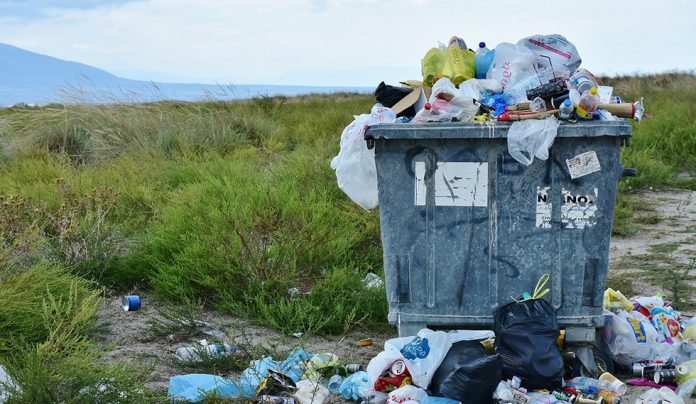This article has been written by D.Priya pursuing the Legal Writing For Blogging, Paid Internships, Knowledge Management, Research and Editing Jobs from LawSikho. This article has been edited by Aatima Bhatia (Associate, Lawsikho), Zigishu Singh (Associate, Lawsikho), and Indrasish (Intern at Lawsikho).
Table of Contents
Introduction
We are in a technology era, where technological growth replaces society’s old life patterns with new fast, effective, and efficient life patterns but the growth is not for free, as it becomes obvious that the technological revolution brings us environmental degradation and severe health hazards. Whereas without technology it is not possible to do any business efficiently. We are extremely dependent on technology, whether it’s simple day-to-day activities or complex business management, we need the help of technology.
New technology provides us with new opportunities for economic growth. The question here is how many of us buy new technology for necessity and how many of us purchase it for the sake of luxury. In the current situation, the implied meaning of high class in society is a luxurious life. The standard of life depends on the amount of wealth an individual possesses. If the sole purpose of buying electronic gadgets is merely to upgrade with the latest generation equipment it clearly shows that the society is buying electronic equipment only for luxury purposes and not out of necessity. As we can see, the more the demand, the more is the production and supply of short life cycle products thus resulting in the increase in electronic waste.
After usage, the disposal of EEE generates waste that contains hazardous and valuable materials in it, the waste and used EEE is called e-waste. Improper management of electronic waste is extremely harmful not only to health but also to the environment. Thus, the major cause for e-waste are high levels of disposable income, urbanization, mobility, and industrialization resulting in higher consumption rates of EEE on Short life cycles products, most importantly there are very few repair options, leading to the purchase of newer similar short life products.
Global concern
The Global E-waste Monitor 2020, a Sustainable Cycles Programme conducted by UNU, UNITAR, ITU, ISWA provides an update on global e-waste statistics. According to the statistics, the average total weight of global EEE consumption increases annually by 2.5 million metric tons. In 2019, the world generated 53.6 Mt of e-waste, 7.3 kg per capita, it is projected to grow to 74.7 Mt by 2030. Statistics show that Asia generated the highest quantity of e-waste. The main concern is that undocumented e-waste is getting dumped in low-income countries either as second-hand products or e-waste. The non-availability of formal recycling facilities will lead to environmental contamination because of dumping acid used to remove gold from rivers, particulate matter, dioxins, from dismantling electronics, leaking substances from landfills, or storing electronics. These hazardous substances contaminate our water system, food system through livestock, fish, and crops. Inhaling fumes from burning wire and cooking circuit boards contaminate the air.
Remote work and e-waste
In the technology era, most of the work is done remotely. There is a presumption that remote work will lead to the excess purchase of Electronic Equipment, resulting in excess E-waste. However, as far as companies are concerned, even if they are bound to comply with corporate social responsibility, there are only a few organizations that perform systematically, most of the organizations and companies do not take responsibility for the e-waste generated by them. They are either dumped in dismantling shops or dumped as undocumented landfills. As far as systematic recycling management is concerned there is not much difference whether the work is done remotely or by the employee in person. The other important hindrance for reuse, recycling of electronic equipment’s mainly computers, laptops and smartphones, and other data storage devices is the risk of a data breach. Before they are prepared for reuse and recycling, the data has to be deleted without a trace, this process needs financial assistance if done in a large-scale organization. E-waste is not completely removable, but it needs systematic recycling and proper investment from the producer side as well as from the government.
E-Waste management rules
It is important to know that India is the only country in Southern Asia with e-waste legislation since 2011. It mandates that only authorized dismantlers and recyclers collect e-waste. E-waste (Management) Rules 2016 covers manufacturer, dealer, refurbishers, and Producer Responsibility Organization (PRO). Even though Indian legislation set up formal recycling facilities with 312 authorized recyclers, with the capacity to treat approximately 800 kt annually, it is disappointing to point out that most of the formal recycling is not fully utilized, as a large amount of e-waste is still handled by the informal sectors.
E-Waste (Management) Rules, 2016 are enacted under The Environment (Protection) Act, 1986. According to the Rules, the producer of the EEE shall be responsible for the collection of e-waste from the ‘end-of-life’ of their products under the Extended Producer Responsibility(EPR). The rules further enable the state pollution control board to grant and renew authorization to the dismantlers, recyclers, manufactures, and refurbishers to handle e-waste in a proper and effective way.
In order to successfully handle e-waste, coordination with other stakeholders from industry, government, NGOs, international organizations, and academia is required. Some of the principles to develop effective e-waste management systems are to set a clear legal framework for e-waste collection and recycling, to enable the producers to finance the collection and recycling of e-waste under EPR, to strengthen the monitory and compliance mechanisms, to provide an incentive for recyclers to enhance in systematic and technological advancements. To create awareness among consumers about the environmental benefits of recycling, to create awareness among the workers about the health hazards of working in recycle management centers, and to provide them with frequent medical support.
E-waste Recycling can be managed, by setting up a fully functioning E-waste collection center throughout the country, by establishing municipal pick-up services, by setting up commercial pick-up services, e-waste drop boxes, and by creating collection centers in the retail store. To prevent “backyard recycling” which is engaged by self-employed people, who informally collect and recycle e-waste, the collection usually happens from door-to-door by buying or collecting used EEE from households, and business institutes. They either dismantle for usable materials or burn to convert to secondary raw materials, which causes significant damage to the environment and human health.
Importance of recycling business
According to the Global E-waste Monitor 2020, nearly 78 countries adopted the e-waste policy, regulation, and legislation. Even though most developing countries adopted policy, regulation, and legislation to regulate e-waste, they still lack proper systematic e-waste collection and management methods. The main reason is lack of investment and political motivation, consumer cooperation, and awareness. E-waste contains toxic or hazardous substances such as Brominated Flame Retardants (BFR), Mercury, Hydrochlorofuoro carbons, etc, Annually, a total of 50t of mercury and BFR plastics (71 kt) are released into the environment by undocumented flows globally.
Out of 53.6 Mt of Global e-waste, 82.6% (44.3 Mt) are undocumented, they are either discarded into waste bins by high-income countries or are exported as second-hand products or e-waste to middle and low-income countries. The waste is later discarded as landfills or burned for creating precious metals out of it.
53.6mt global e-waste consists of precious raw materials such as aluminum, copper, iron, gold worth the value of $57 billion USD. Only $10 billion USD value of raw materials (4 Mt) retrieved from properly documented recycled e-waste amounts to only 17.4% (9.3 Mt) of global e-waste. The remaining 82.6% (44.3 Mt) of e-waste is dumped into the environment without proper documentation and recycling management. Therefore, recycling companies play a vital role in processing and managing undocumented e-waste. Proper management of e-waste not only gives enough returns but also protects the environment and health of the people.
Conclusion
It is clear from above that the main reasons for e-waste are high consumption rates of EEE, short life cycle products, and few repair options. The solution is to mitigate EEE consumption, the EEE producers must enhance the life of EEE and invent environment-friendly products to protect the health and the environment. The global producers must create proper disposal and recycling management centres throughout the world. Further, the producer must produce products that can be repaired and reused without excess cost.
Upgradation of new technology in old electronic goods will help prevent old consumers from buying new electronic products to keep up with the latest technological advancements. Improper e-waste management has to be controlled, undocumented e-waste is dumped into developing countries, these wastes which are imported as second-hand products or often handled in inferior conditions, causes serious health issues to the workers and the children who live, play, and work near that e-waste management areas. Early reports show that exposure to informal e-waste causes serious health issues such as olfactory memory, DNA damage and changes in gene expression, hearing loss, rapid onset of blood coagulation, cardiovascular regulatory changes in infants and children. The report shows further complications such as liver dysfunction, fasting blood glucose levels, male reproductive and genital disorders, as well as effects on sperm quality. Thus, it is important to develop a systematic e-waste management service with proper infrastructure throughout the country.
References
- https://www.itu.int/en/ITU-D/Environment/Documents/Toolbox/GEM_2020_def.pdf
- EWM-Rules-2016-english-23.03.2016.pdf (greene.gov.in).
Students of Lawsikho courses regularly produce writing assignments and work on practical exercises as a part of their coursework and develop themselves in real-life practical skills.
LawSikho has created a telegram group for exchanging legal knowledge, referrals, and various opportunities. You can click on this link and join: https://t.me/joinchat/L9vr7LmS9pJjYTQ9
Follow us on Instagram and subscribe to our YouTube channel for more amazing legal content.
 Serato DJ Crack 2025Serato DJ PRO Crack
Serato DJ Crack 2025Serato DJ PRO Crack











 Allow notifications
Allow notifications



